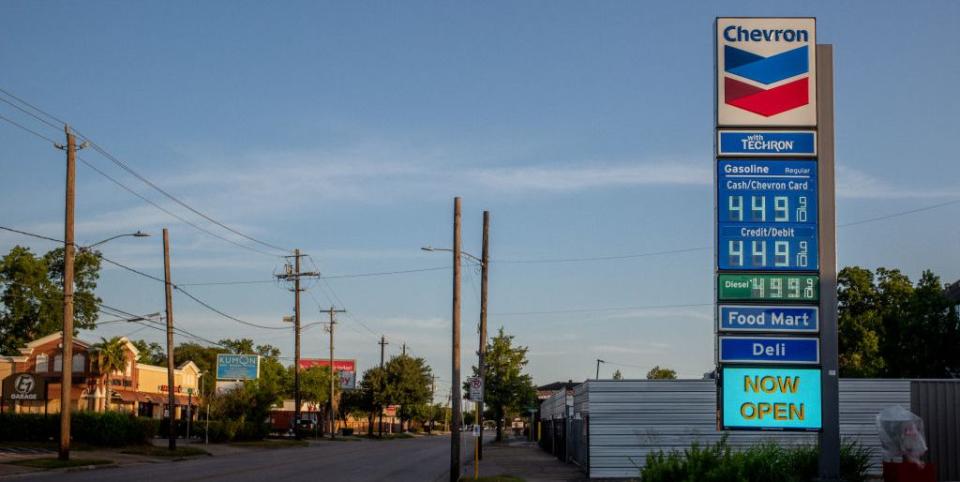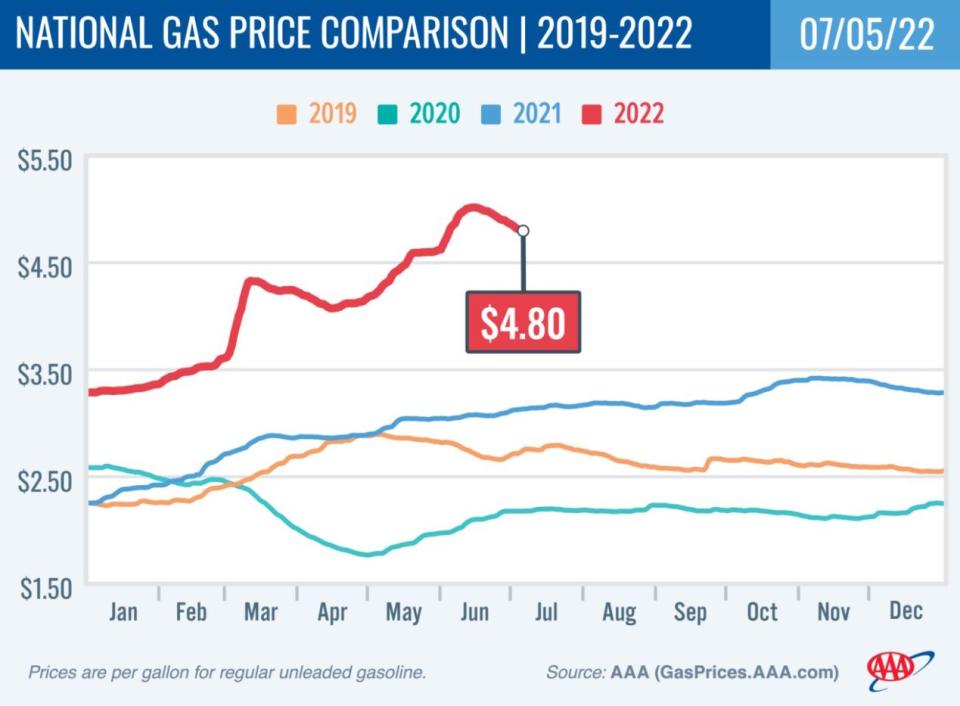Gas Prices Are Coming Down, but for How Long?

"Hearst Magazines and Yahoo may earn commission or revenue on some items through the links below."
National gasoline price average declines a bit from the June highs, after peaking above the $5.00 mark shortly after Memorial Day weekend.
July has traditionally been the heaviest month for demand, AAA notes, even if the big holiday travel weekends usually see the highest price spikes.
There is some disagreement among industry analysts regarding the trajectory of the price of oil later through the end of 2022, due to different expectations regarding Russian oil sales.
Gas prices are finally beginning to come down from some of the highs seen last month, with AAA noting this week that the national gas price average now rests at $4.80 a gallon as of Tuesday, July 5th. That's an improvement over the second week of June when the US saw the national average top $5.00 a gallon, with a number of individual counties in some states seeing well over $7.00 a gallon. And we have lower demand to thank for this, despite a busy July 4th holiday weekend.
With the TSA reporting that it has been screening over 2 million people per day for the past month, it does indeed appear that Americans are choosing to brave higher airfares in addition to higher gas prices.
We're not out of the woods yet, however, as most of the summer travel season is still ahead. One possible bit of good news is that gas prices have generally tended to peak around Memorial Day in prior years, which is perhaps what we've seen this year as well, albeit with a two-week delay. But since these are far from ordinary times, take this commonly observed pattern with a grain of salt.
The bad news is that overall gasoline demand is typically highest during this particular month.
"Domestic gasoline demand dipped recently, which took some of the pressure off of pump prices. About 80% of stations are now selling regular for under $5 a gallon," said Andrew Gross, AAA spokesperson. "But July is typically the heaviest month for demand as more Americans hit the road, so this trend of easing prices could be short-lived."
If there are any pieces of individual good news, it's that a number of states have seen some modest drops over the past week, including the states of Texas and Delaware, where prices have declined 13 cents over the past week, as well as Arizona, Illinois, Indiana, and Ohio, where prices have decreased by 12 cents over the past week.
These are only mild consolations given that gasoline prices nationwide are a whole $1.67 more than a year ago, and just four cents less than a month ago. So we're basically back to the post-Memorial Day territory with most of the summer driving still ahead.

Still, even in the states where prices are lowest, they're still well above the $4.00 mark. AAA notes that the least expensive gas can be found in South Carolina, averaging $4.29 at the moment, followed by Georgia with a $4.30 state average, and Mississippi with $4.31; most of the least expensive gasoline can be found in the south and in the Gulf Coast states.
"According to the latest Energy Information Administration (EIA) data, gas demand currently sits at 8.93 million b/d, which is lower than last year’s rate of 9.11 million b/d at the end of June," AAA notes. "On the other hand, total domestic gasoline stocks increased by 2.6 million bbl to 221.6 million bbl. These supply/demand dynamics, along with decreasing oil prices, have pushed pump prices lower. If these trends continue, drivers will likely continue to see relief at the pump."
It remains to be seen whether heavier demand during the month of July will force the national gas price average to tick further up, between now and the Memorial Day travel weekend. While there aren't any big travel holidays coming up for about two months, the sheer volume of everyday demand could still force the average back closer to the $5.00 mark.
Further out, there is disagreement among industry watchers regarding oil prices in the near term, with some predicting a catastrophic rise in the price of oil due to the implementation of counter-sanctions by Russia later in the year.
To be sure, there is still quite a bit of uncertainty surrounding the European Union's position on halting most imports of Russian oil by the end of 2022, as well as interruptions in the flow of Russian gas to a number of western European countries occurring in Europe. Beyond that, there is now some uncertainty regarding the supply of oil in Saudi Arabia as well—a possibility that was recently highlighted by French President Emmanuel Macron days ago, suggesting that there isn't as much excess capacity in some Middle Eastern countries as previously thought. This revelation has rattled energy markets just a few days ago as the White House has attempted to convince more oil producing countries to increase output, promising plenty more uncertainty through the rest of the year on both sides of the Atlantic.
Are higher gas prices changing your travel plans this summer? Let us know in the comments below.

 Yahoo Autos
Yahoo Autos 